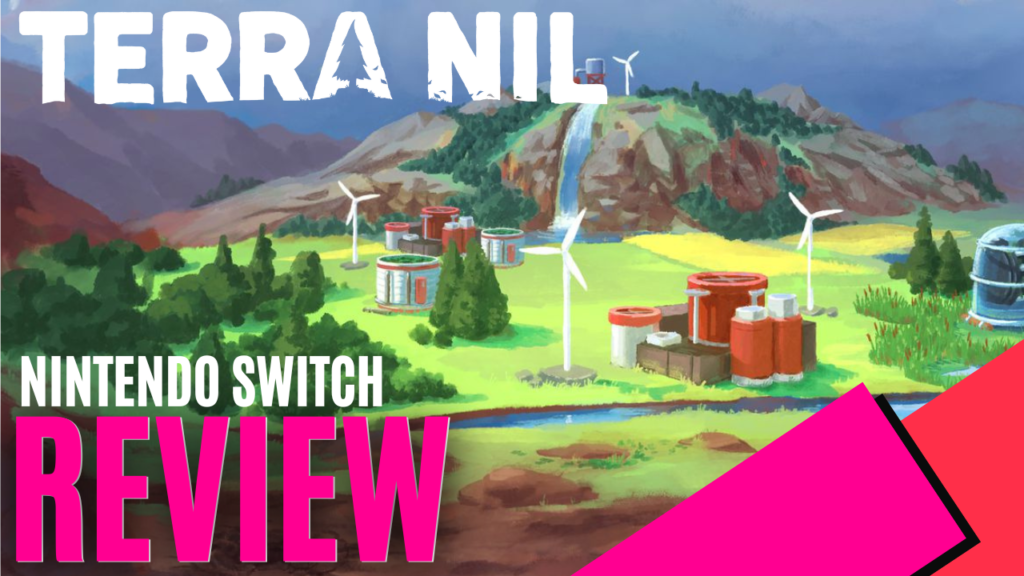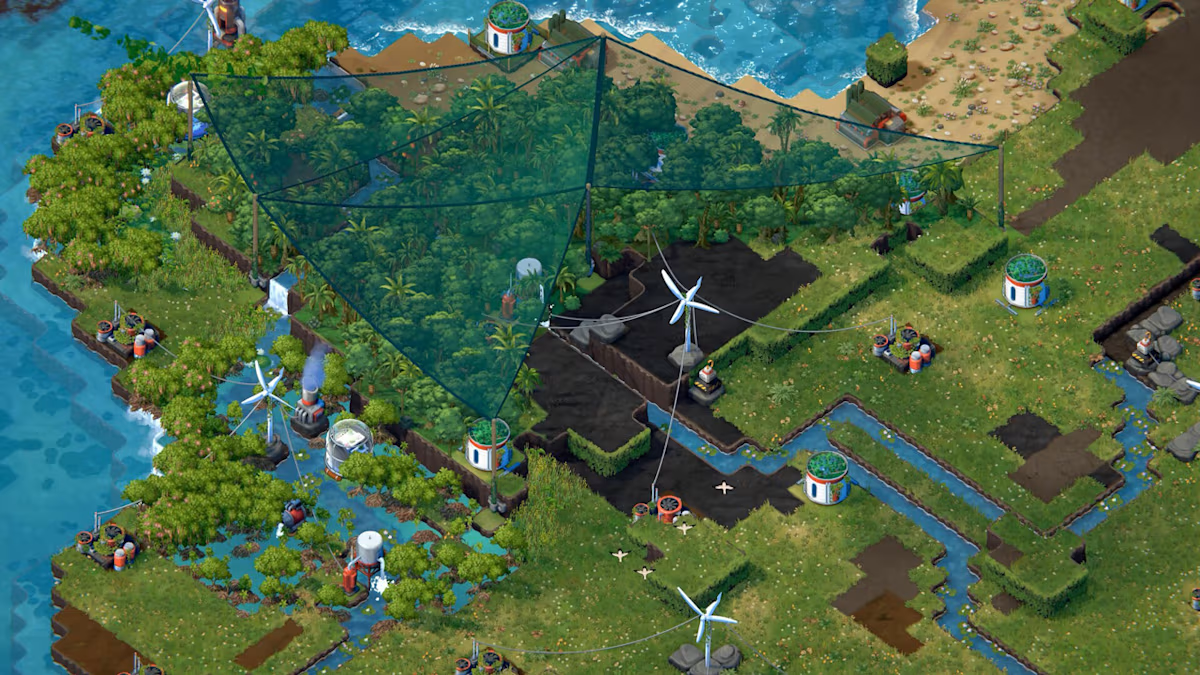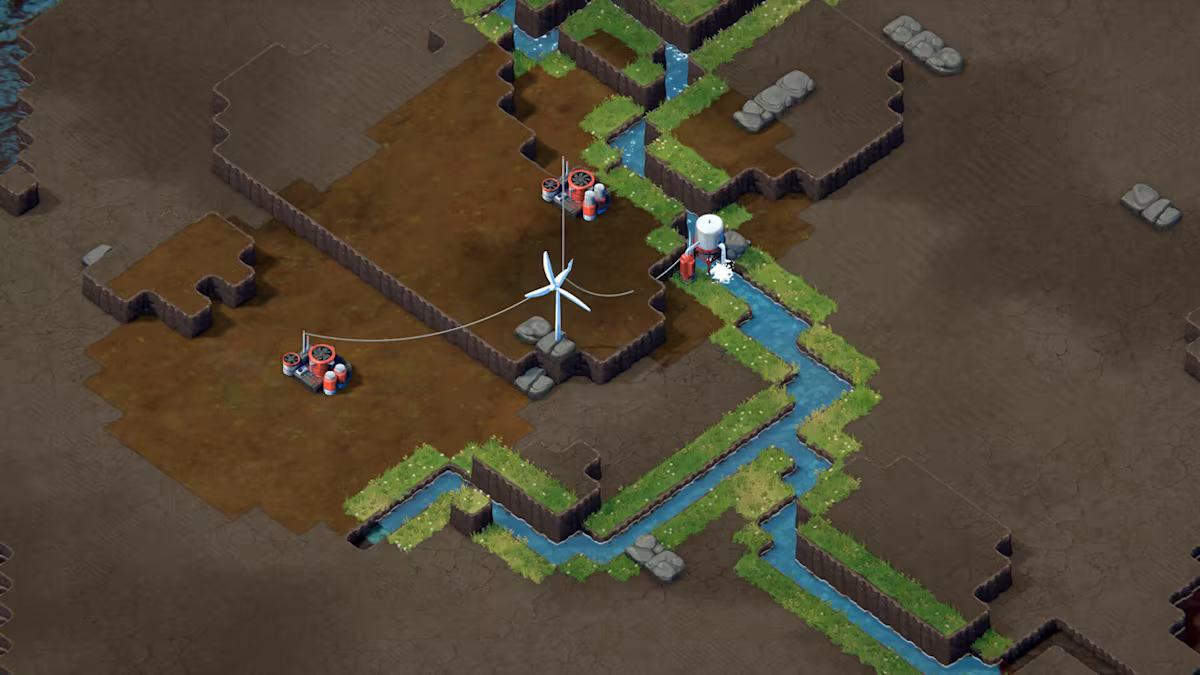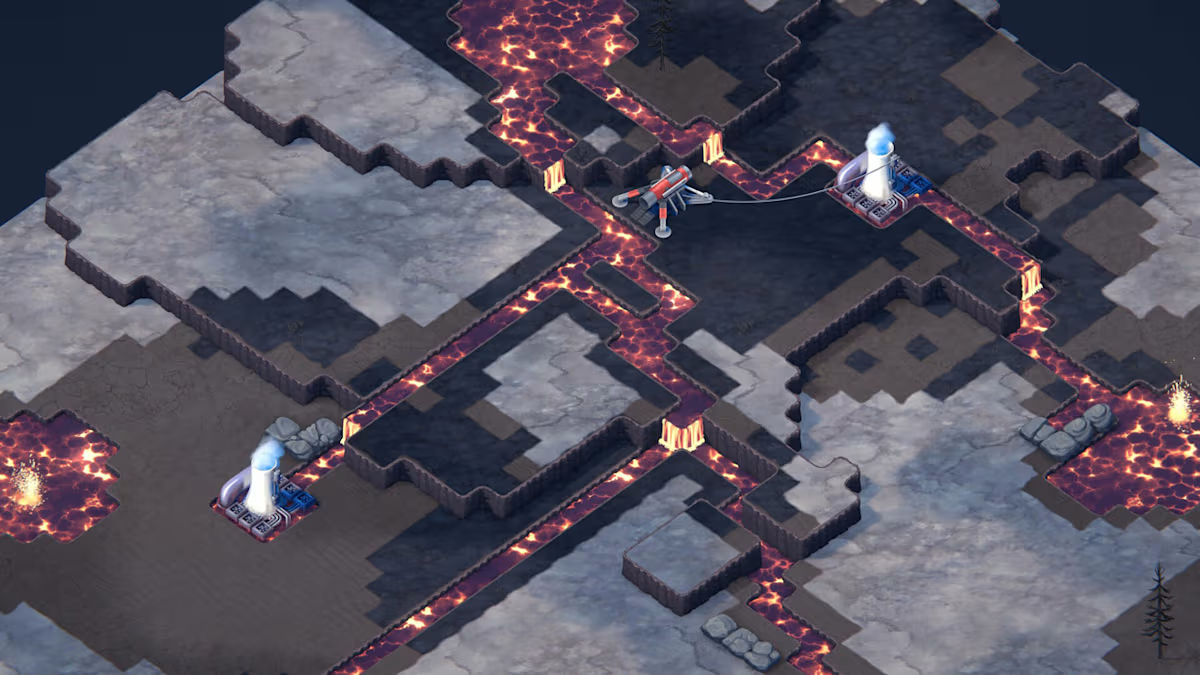
City-builder games are abundant in the gaming sphere, with industrialisation and humanity taking over large plots of land being pretty standard fare. What isn’t often covered is reverse city-builders, and this is where Terra Nil thrives; emphasising the importance of preserving the natural world. The team at Free Lives and publisher, Devolver Digital, have brought it back to nature, at long last, on the Nintendo Switch.
I first experienced Terra Nil on PC in March 2023, and I was keen to give it a go on the newly released Switch version. Starting in a desolate wasteland, the isometric view of the barren grounds isn’t much to look at, but that’s where the player comes in, and to see the real beauty of Terra Nil, you need to restore it through some hard work. It doesn’t take long for all the toils of your labour to pay off, and the way to get there is by using eco-technology.
With an abundance of technology at your fingertips, the beautification project begins by placing some turbines, toxin scrubbers and irrigators. Fertilising the grounds and removing pollution from water sources brings back lush greenery and pristine waters, land can be excavated, forests can be grown, and regions can be returned to their former glory.
Terraforming isn’t a one-size-fits-all deal; each map has different requirements appropriate to the type of region being rehabilitated. I had the delicate task of climate control, striking the balance between temperature and humidity to achieve an ideal habitat.

There are various biomes per map, including forests, wetlands, and tundra, depending on the region. I enjoyed a little extra challenge meeting all the optional goals, involving further altering atmospheric conditions for bonus phenomena, like the reintroduction of butterflies, or the mesmerising Aurora at the Volcanic Glacier.
Maps range from desolate islands, dried-up riverbeds, and irradiated zones, all of which tested my ecological prowess learned along the way. The game is by no means easy; Terra Nil encourages careful consideration of using resources efficiently with limited space and little opportunity to undo actions. Luckily, there are usually opportunities to restore biomes if the equipment is used effectively.
The whole process of restoration is pleasant, offering an isometric view overlooking the landscape. Terra Nil’s maps are tile-based with a subtle pixelated art style and pleasing colour palette that makes the restored areas look even more stunning. Scoping out animals in the restored biomes is a fun final phase of hide-and-seek, and the end-of-level observation is a sweet way to round off a stage.
Terra Nil gives players a chance to admire the fruits of their efforts, whether it be a tropical rainforest abundant with birds and fish, or a zone I saved from certain radioactive doom, and after packing up any remaining human contraptions and jetting off, every completed map feels special.

Audio is all around ASMR heaven, with a gentle whirring of machines that soon becomes the chirping of birds, rushing streams, and calming winds. The sounds of nature with serene piano orchestrations make for the perfect soundscape to unwind. Visuals and audio work together for a wonderfully cosy and wholesome game.
There were times when I needed to restart maps, but surprisingly, I didn’t mind. I found satisfaction in starting from scratch with new insight on approaching the stage, and Terra Nil offers a gentle approach to trial and error.
A beautiful sketchbook-style guidebook can be referred to at any time, filled with plenty of hints to get a budding ecologist started. Zen mode is a stress-free option to appreciate Terra Nil’s maps in the most relaxing way possible, while Ecologist and Environmental Engineer modes are available for those who want to test their skills with fewer resources and guidance.
The campaign is relatively short, with four maps taking 30-40 minutes per region based on skill, and post-game content has alternate versions of each map to further challenge field skills. The campaign is long enough with enough variety to keep each level interesting, and I found myself happily replaying regions for the additional challenge levels and modes.
Where Terra Nil didn’t thrive was the port to Nintendo Switch. It looked gorgeous on handheld, but I had frequent frame drops, slow load times, and quite a few crashes. When docked, the game looked much the same. However, when there was a decent amount of rain, snowfall, or other animations, the frame drops became significantly more noticeable.

The controls could be finicky on the Nintendo Switch, and using the sticks of the Joy-Cons and Switch Pro controllers made it difficult to accurately place equipment on tiles rather than point and click on the PC version. The Nintendo Switch hardware doesn’t appear to keep up with the game, and it left me somewhat disappointed. If it wasn’t for the performance issues, this one would be a great game to play on the go.
Terra Nil is a mellow but meaningful look into the environmental impacts of climate change and human interference. It emphasises that humanity can be part of the solution in habitat restoration and wildlife conservation, celebrating the natural world in a calming way, though carrying a crucial message.
I can’t praise the efforts of Free Lives and Devolver Digital enough. The devs have raised over USD$100,000 with a portion of each game purchase going to the Endangered Wildlife Trust. Since July 2023, Free Lives has planted over 45,000 trees in conjunction with every copy sold.
They were also a nominee for Games for Impact in 2023, a recognition that is beyond well-deserved. Terra Nil made me feel hopeful for the future of our planet, and it’s an experience worth every dollar.

The Good
- Impactful and wholesome
- Stunning visuals and lovely music
- Gameplay is challenging but rewarding when mastered
The Bad
- Relatively frequent frame-drops and crashes on Nintendo Switch
- Placing objects is temperamental on Joy-Con controls








